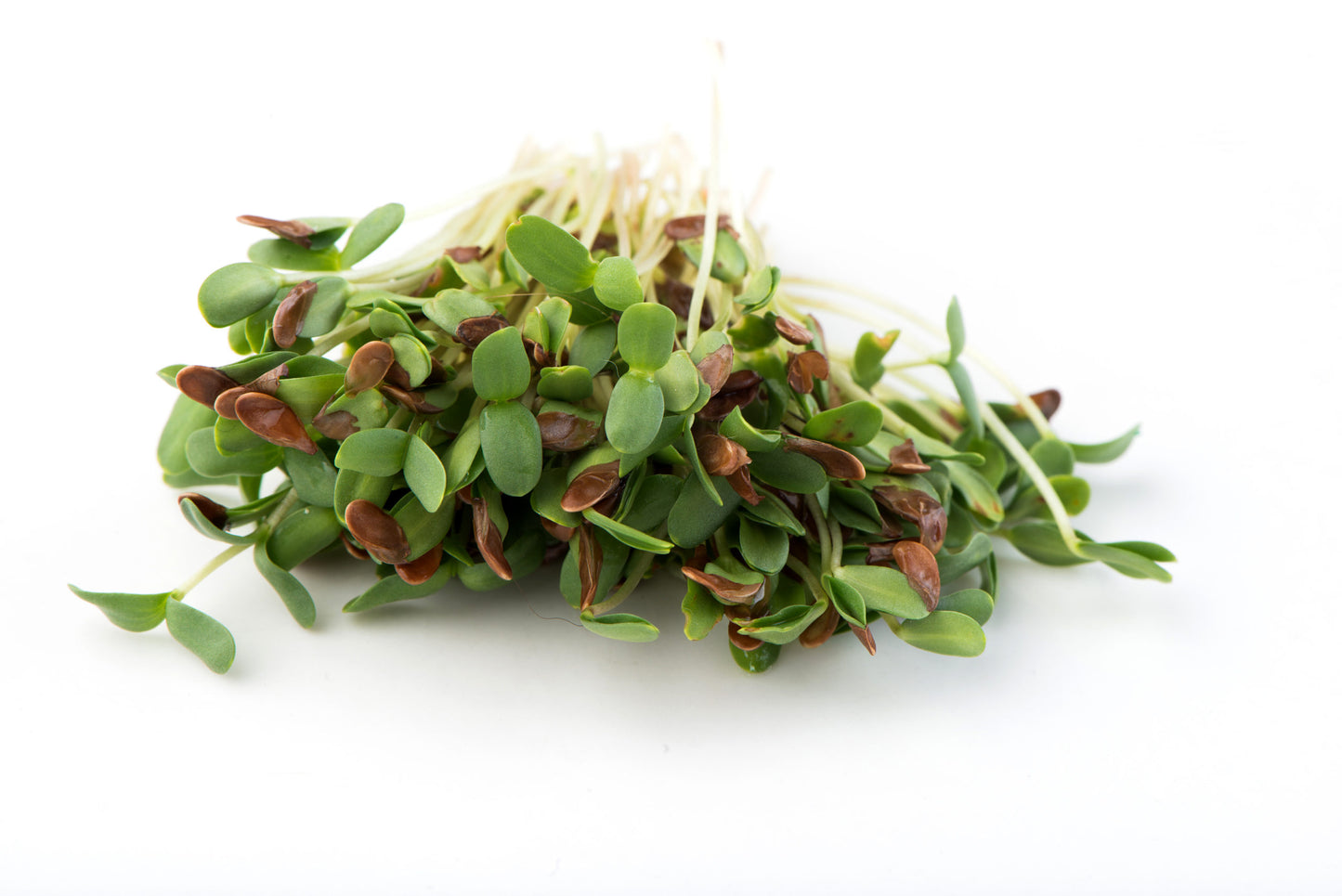Mama Bear's Bounty-Seeds and Sprouts
Flax, Brown 300 G
Flax, Brown 300 G
Couldn't load pickup availability
Flaxseed’s nutrition profile makes it one of the most nutrient-dense foods on the planet. Flaxseeds are nutritious because they’re rich in minerals, fiber, as well as anti-inflammatory omega-3 fatty acids (although not the same type found in fish, such as salmon).
They also provide us with antioxidant substances called lignans that help promote hormonal balance in addition to several other benefits of flaxseed.
Supplementing with just two tablespoons of whole/unground flaxseed (considered about one serving) contains about:
- 110 calories
- 6 grams carbohydrates
- 4 grams protein
- 8.5 grams fat
- 6 grams fiber
- 0.6 milligram manganese (26 percent DV)
- 0.4 milligram thiamine/vitamin B1 (22 percent)
- 80 milligrams magnesium (20 percent DV)
- 132 milligrams phosphorus (14 percent DV)
- 0.2 milligram copper (12 percent DV)
- 5 milligrams selenium (8 percent DV)
Flaxseeds also contain a good amount of vitamin B6, folate (or vitamin B9), iron, potassium and zinc.
Flax Benefits:
1) High in Fiber but low in carbs
2) High in Omega-3 Fatty Acids
3) Helps Make Skin and Hair Healthy
4) Helps Lower Cholesterol and Treat Hyperlipidemia
5) Gluten-Free
7) High in Antioxidants (Lignans)
8) May Help Regulate Blood Pressure
9) Supports Digestive Health
10) May Help Lower Cancer Risk
11) May Help with Weight Loss
12) Helps Decrease Menopausal and Hormonal Issues
Flaxseeds vs. Flaxseed Meal vs. Sprouted Flaxseeds
The very best way to experience the benefits of flaxseed is to consume flaxseeds in their sprouted form. Soaking them and then sprouting them eliminates phytic acid and may greatly increase mineral absorption.
Yield: 2 Tbsp/30 grams of dry seed yields 2-3 cups of sprouts
Storage: To prolong viability, it is best to store them in the fridge. If you store your seeds in the freezer, they’ll last indefinitely!
SPROUTING FLAX: NOT RECOMMENDED FOR MASON JAR SPROUTING:
Soilless Method Gelatinous Seeds
No Soak, mist only. Day 1
Fit a heavy duty unbleached paper towel, coffee filter, or Baby Blanket to your sprouter of choice- on a plate, porous surface like a terracotta pot bottom or tray with grid holes in the bottom of it.
Mist paper towel so the seed will stick to the surface when you spread them.
Sprinkle the seed in one thin layer so after misted and taken up the water, the seeds will be one seed beside the other. Use spoon or other tool to separate clumps.
Mist seed on the towel 2x in the first hour or two to be sure it has started to hydrate. Pour off pooled water.
Place sprouter in a vented plastic bag and return it after every rinse.
Rinse/mist twice daily.
Once the seed is stuck to the paper mist more aggressively. Use enough water to prevent roots from browning or water from a slow-moving tap.
Drain off any excess water with each rinse. Tap the sprouter to release water from the holes. Drain off excess water on your plate.
Grow & Harvest
By day 3 the sprouts have raised above the towel and start to free themselves from the towel. At this time, you can decide to take the towel out or let the roots grow into the towel in a day or two. If you choose to scrape the sprouts off the towel carefully water under the tap gently until you harvest on day 5, 6 or 7. The gelatinous nature of the hulls, make them susceptible to mold so eat the sprouts soon after harvest.
If you chose to leave the sprouts to grow into the towel, water until the new shoots are tall enough to cut with scissors above the roots- probably day 7 to 9.
Cress is the only gelatinous seed you will be able to put in a bowl of water and float some of the hulls off of if you want to. There is lots of fiber in the hulls and there are advantages to eating the whole sprout.
Enjoy!
*NOTE* You can also sprout these seeds in a tray using trays and soil.




